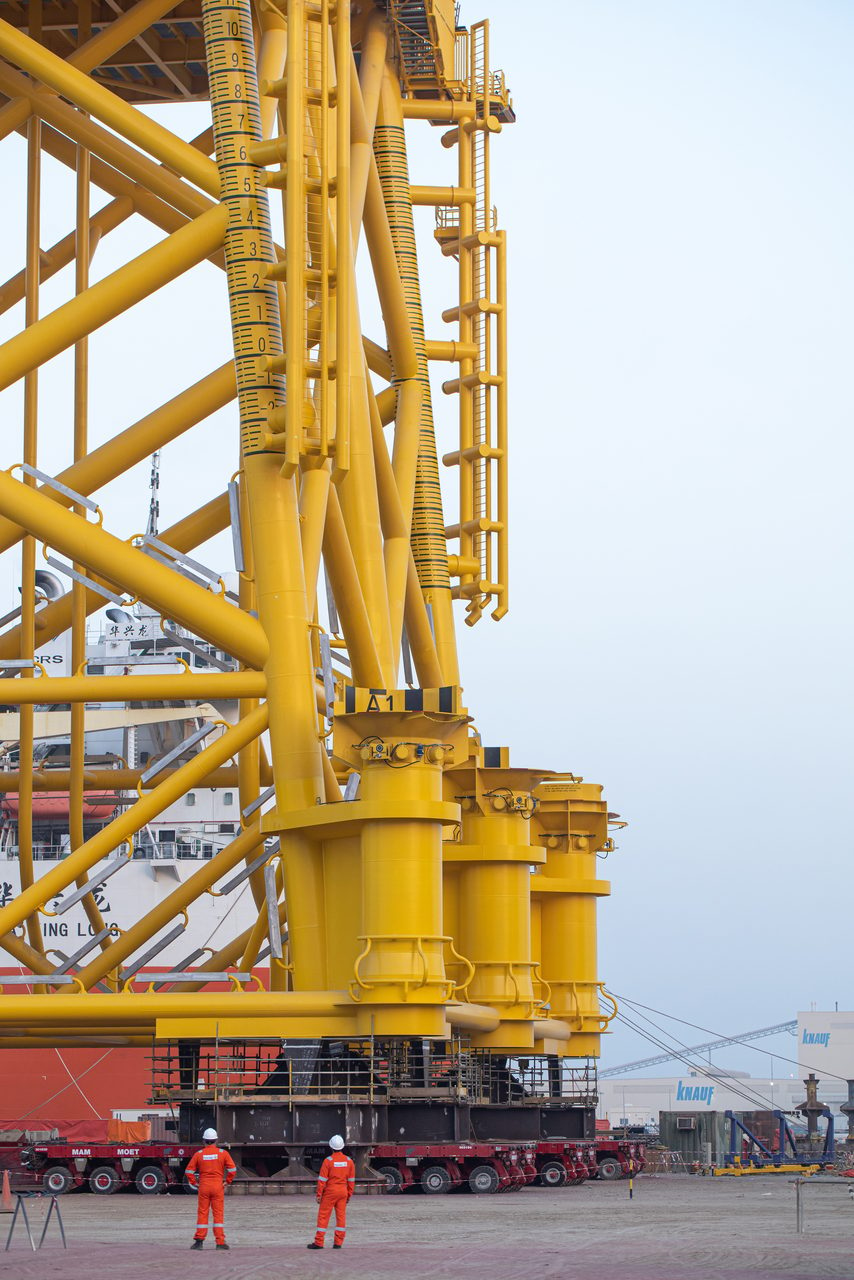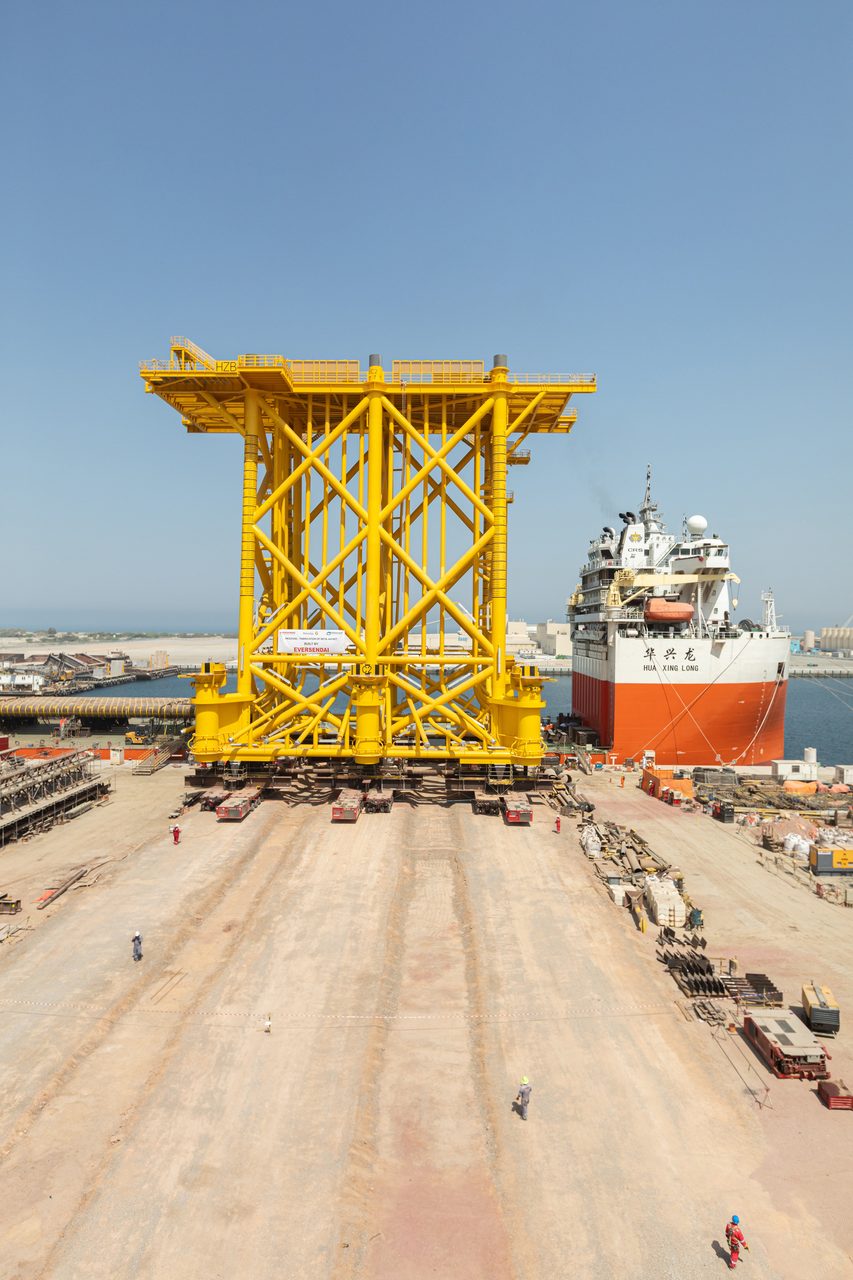
Adam Cheesman is marking one year since moving to Perth in Australia permanently from the UK. As Operations Director he was tasked with growing our business in the region.
“I was sitting in Aberdeen 18 months ago, finalising the strategy for the market entry of our Operations business and growth of the overall business,” he recalls. “To be sat here now and looking back over the past year, we have achieved what we set out to do despite the challenges that Covid-19 has thrown at us.
“We now have a stronger business after putting the foundations for growth in place, we‘ve increased our brand recognition, we have a team that is growing to meet the demands of the new work we have secured. We’re on the right path.”
Antipodean ambitions
THERE’S OPPORTUNITIES APLENTY IN AUSTRALIA AND NEW ZEALAND, AND WE’RE WELL PLACED TO SEIZE THEM – AS OPERATIONS DIRECTOR ADAM CHEESMAN AND REGIONAL DIRECTOR JOSIE PHILIPS EXPLAIN
WORDS CHRISTINA McPHERSON
PUBLISHED SEPTEMBER 2020
WHere we work
The world’s highest waves are thought to be formed in the Atlantic Ocean, south of Iceland, which then come barrelling down the North Sea. The highest single wave ever measured by a fixed installation anywhere in the world was in the North Sea on January 1, 1995 – a terrifying 25.6 metres, three times the size of the tsunami waves that devastated Sri Lanka and Thailand in 2004. So when TenneT entrusted Petrofac with the contracts to design, supply and install the substations for their massive offshore wind farm projects in the North Sea, perhaps the most vital element was the substructure, or jacket, that will need to support the substations for the next 30 years.
Anchored to the seabed, jackets resemble giant, multi-legged, rectangular tables. They’re made to provide a stable, secure and long-lasting base for new high-voltage electricity substations.
For the jackets completed and shipped for the HKZ project this means being able to withstand the worst the North Sea can throw at them.
The jacket trays – or ‘cable decks’ - are the surfacing point for the underwater cables (J-tubes) carrying power from offshore wind turbines into the substations. The substations then ramp up the voltage and transmit it to a land station to be distributed to the relevant national grid.
DESIGNED TO LAST
The process starts with a huge amount of computer analysis and simulation, says Lead Structural Engineer Anand Balasubramanian.
“Each jacket design is unique and there are many variable parameters. We factor into our calculations all the environmental loads and site conditions specific to each location, including water depth, soil type, waves, winds and currents – and how these might change over the next century.”
This data is then used to design the jacket, determine how many piles will be needed for the foundations, what size they need to be and how deep below the seabed they must penetrate. The HKZ jackets, for example, at 50 metres long, 34 metres wide and 44 metres high, are anchored to the seabed by six piles, each weighing 162.5 tonnes. They are buried up to 50 metres deep in the sea bed.
“We also factor in scenarios like, what if a ship collided with our structure? Our simulation enables us to design a jacket that could withstand such a force,” says Anand.
The design also takes into account the fact that the jackets will be loaded onto transportation barges, how long the voyage will be and the potential movement of the barge in the waves from side to side and up and down. Whether the jackets can travel in a vertical or horizontal position (depending on height clearance in the Suez Canal, for example) also has a bearing on the initial design and fabrication sequence.
A major influence is the intended lifespan of the jackets. In the case of the HKZ jacket, that is around 30 years – with minimal maintenance. The platforms will not be manned, so any offshore repairs would be extremely expensive.
“Finally, we have to design each jacket and its foundations in a construction and installation-friendly way. It’s no good coming up with a clever design that ticks all the technical boxes if it’s too complicated or costly to make or put in position,” says Anand.
WHEN IT COMES TO DESIGNING, ENGINEERING, BUILDING AND INSTALLING AN OFFSHORE JACKET THERE’S NO SUCH THING AS ONE SIZE FITS ALL. BUT WHAT EXACTLY IS A JACKET, AND WHAT GOES INTO ITS MANUFACTURE? PETROFACTS SPOKE WITH SOME OF THE TEAM BEHIND THE FABRICATION OF OUR JACKETS FOR TENNET’s HKZ offshore grid connection project TO FIND OUT…
TAILORED TO PERFECTION: THE STORY OF A JACKET
PROJECTS
WORDS RICHARD LOMAX
IMAGES CHRISTOPHE VISEUX
PUBLISHED SEPTEMBER 2021
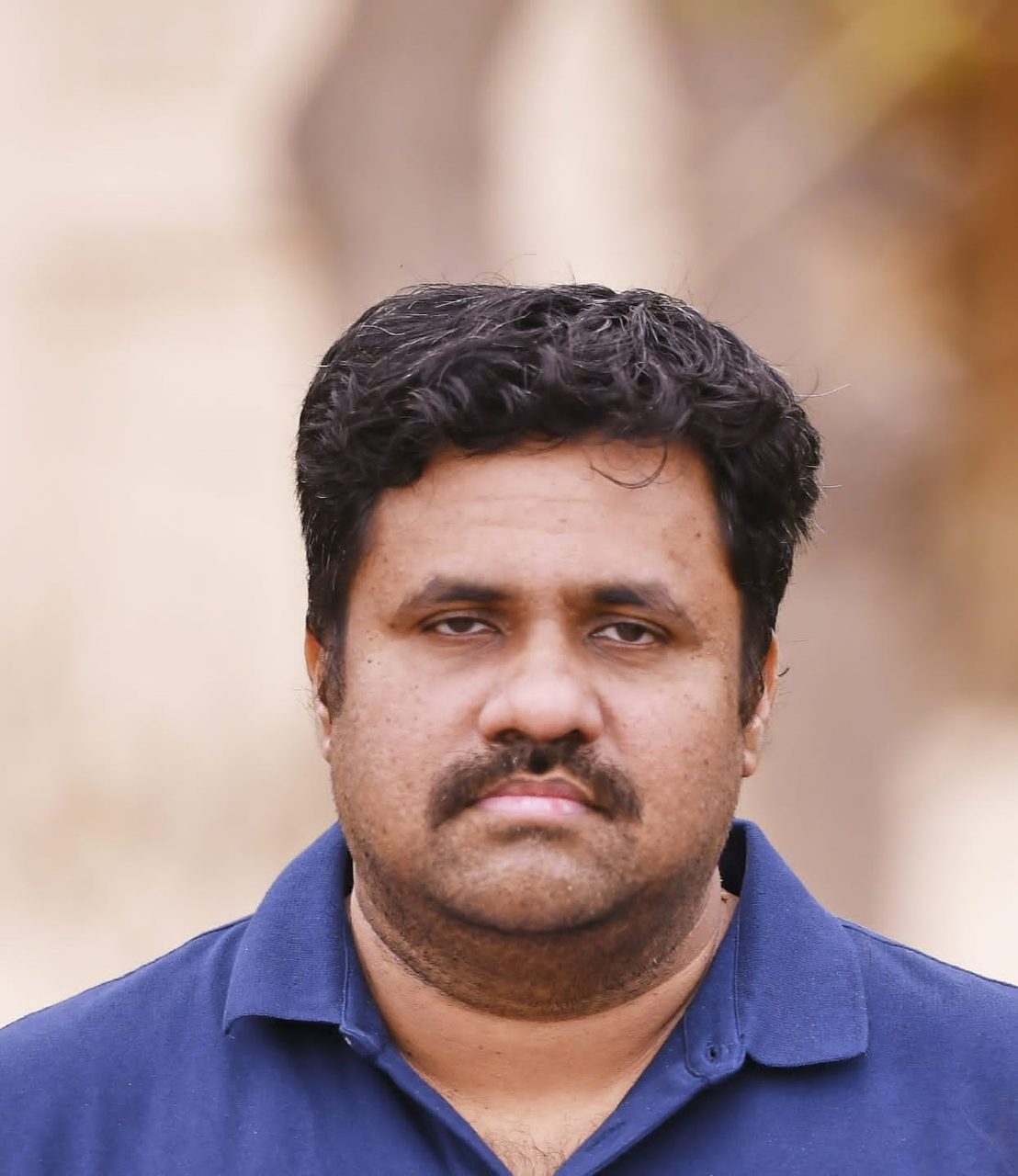
Anand Balasubramanian
SACRIFICIAL ANODES
“There’s a whole science behind the way you paint metal that will be submerged in sea water and what you paint it with,” says Project Engineering Manager Subramanian K. “If you don’t pay it enough attention, the sea will eat away your structure.”
The team follow the Norwegian offshore specification for the paint application process, given their offshore oil and gas installation experience and well-established and exacting set of standards. They then work closely with a paint manufacturer to develop a product that meets Petrofac’s durability, composition and application needs.
“Besides the paint, we attach ‘sacrificial anodes’ to the steel as part of the cathodic protection system. The anodes slowly dissolve in the sea water and protect the steel against corrosion,” explains Subramanian.
Another key concern is the connection points between the various pieces of carbon steel. If the jackets are to be fully-functioning for the next 30 years, they have to make sure the underwater welded joints will survive. These can be prone to ‘fatigue failure’, and any crack in them threatens the integrity of the whole platform. From the outset, in the design and quality assurance process, the team works on the basis that their welds would last for 300 years, or 10 times the expected life.
“Perhaps our biggest engineering test for the HKZ jackets took place offshore during the installation phase,” says Subramanian. “So many systems have to work perfectly for a successful installation – among them the crane lifting the jacket from the vessel and into position, the hydraulic hammers that drive the steel piles through the sleeves attached to the jackets and into the seabed for anchorage and the grouting of the gaps between sleeve and pile.”
Most importantly, the jackets need to be able to stand on the seabed until the piling is completed. There have been cases involving other companies where jackets have simply sunk into the seabed and been lost because this ‘on bottom stability’ had been neglected.
“It’s common for at least one of these systems to fail,” says Subramanian, “but we tried to provide for every contingency back at the yard and both jackets for HKZ were installed successfully within the planned offshore time.”
Sacrificial anodes are highly active metals used to prevent a less active material surface from corroding. Adding zinc, for example, prevents the iron of the submerged jacket legs from corroding as it oxidizes much faster than iron would. It is consumed in place of the metal it is protecting, hence “sacrificial”. In fact, zinc would oxidize completely before iron would begin to react.
As well as adding sacrificial anodes, the HKZ jackets are fully painted, protecting the structure from corrosion. An unpainted jacket needs more anodes than a painted jacket. Generally speaking, a single anode is a 0.25m by 0.25m solid bar, 2.75m long and weighing about 475kg. For the HKZ jacket, over 150 anodes were attached.
SEAWATER PROTECTION:
HOW SACRIFICIAL ANODES WORK

Subramanian K

The spacious Ras Al Khaimah dockyard in Al Jazeera Port has its own jetty which meant the team could move the jackets directly onto transport vessels and send them straight off to sea
THE PERFECT FIT
Dimension control is a key specialist task. The HKZ jackets and topsides, for example, are constructed in separate yards and won’t come together until they are positioned offshore – by which time of course it would be too late, certainly too expensive, to correct any misalignment.
“We took zero chances,” says Project Quality Manager Mostafa Henawy. “They have to be a perfect fit and the experts were able to test this in both yards by real time analysis using virtual assembly software “Spatial Analyzer”.”
Mostafa has been on site from day one, acting as the liaison point between subcontractor and client. “The client well defined requirements and was closely involved at every stage of the project – from material cutting and pre-fabrication to jacket assembly and welding testing,” he says.
“Jointly we had full focus on meeting the highest standards so that these unmanned platforms would keep functioning for 30 years.” And so the next time there’s a once-in-100 years storm event in what is one of the world’s roughest seas, everyone involved can perhaps sleep that little more soundly.
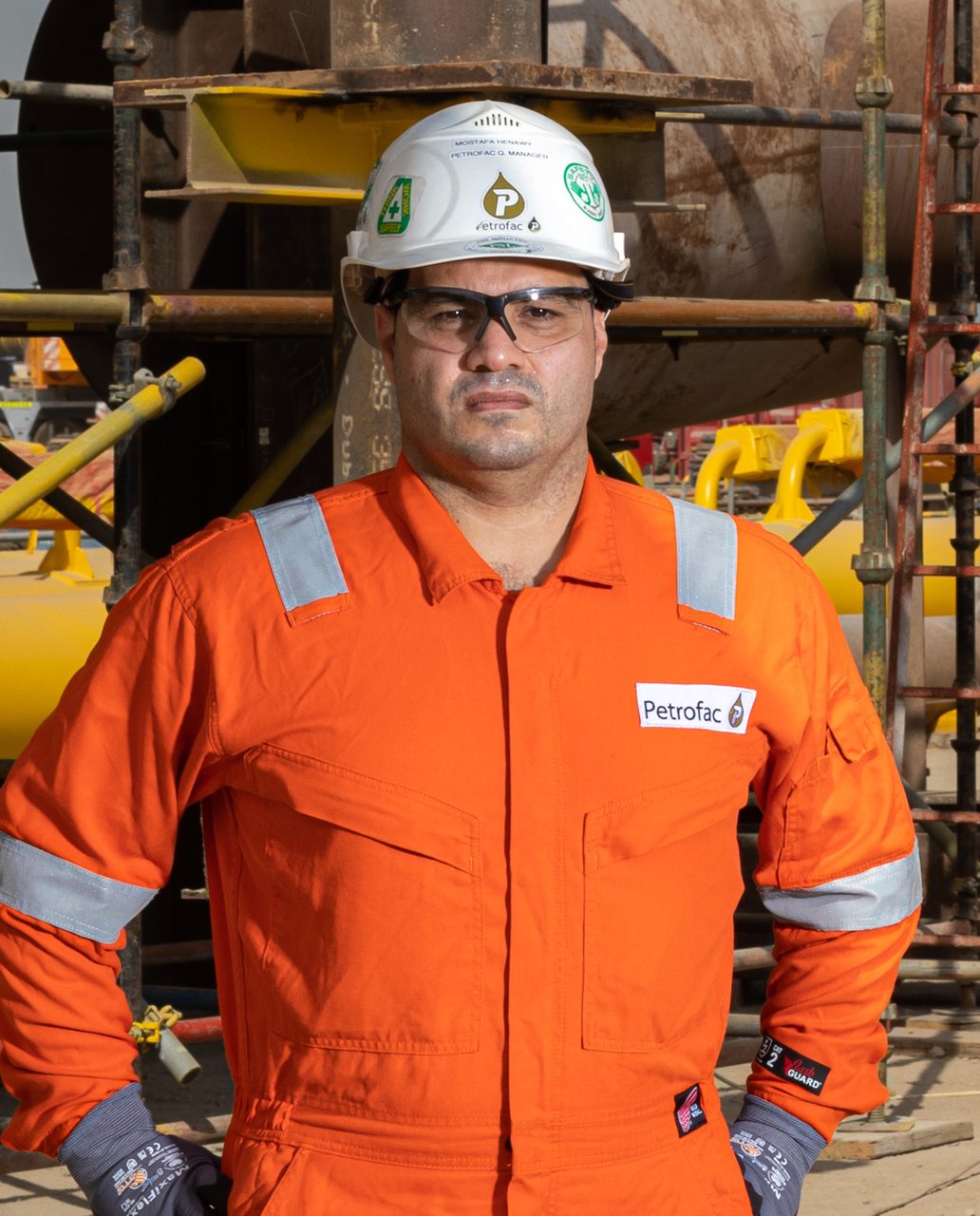
Mostafa Henawy
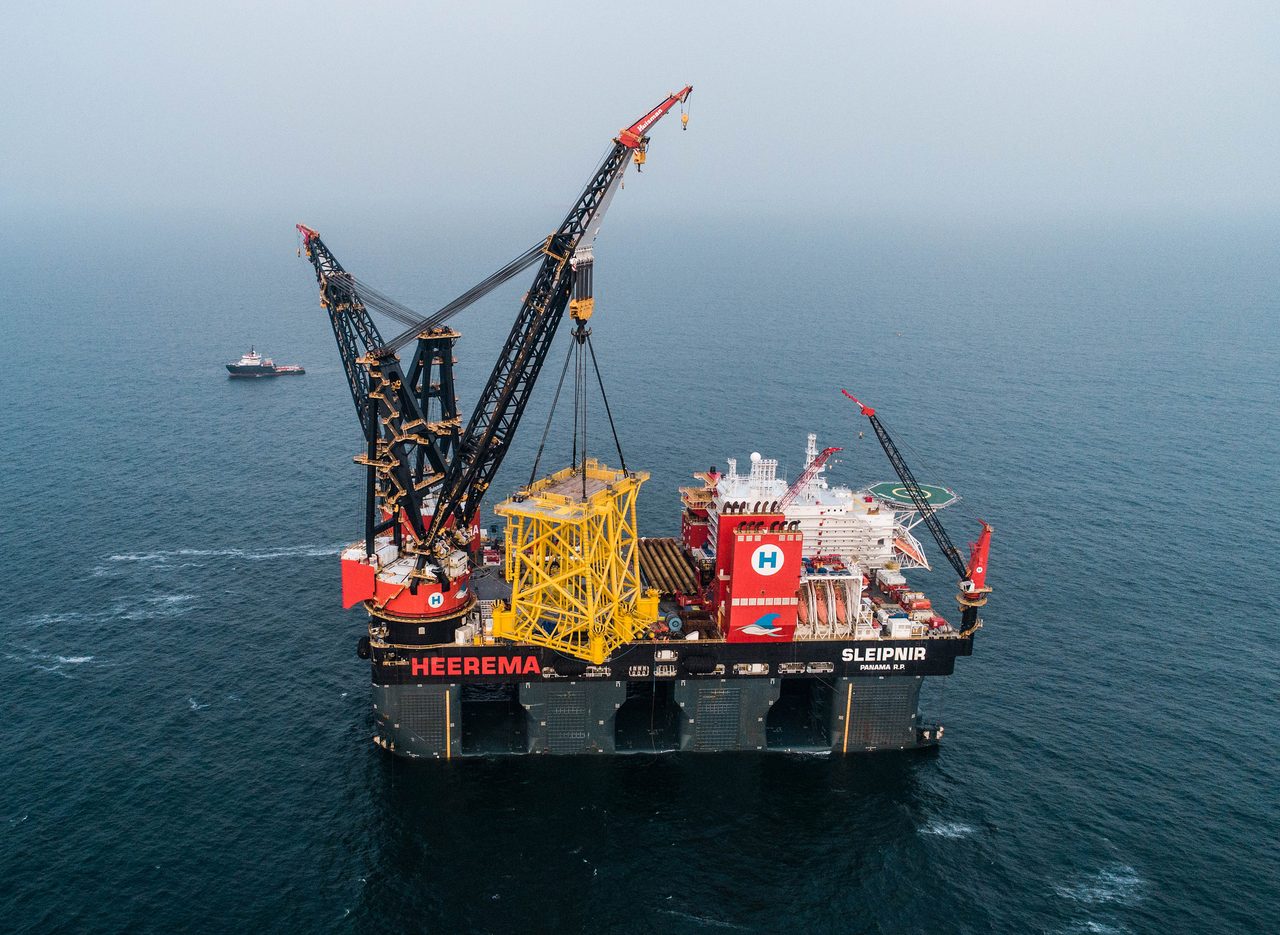
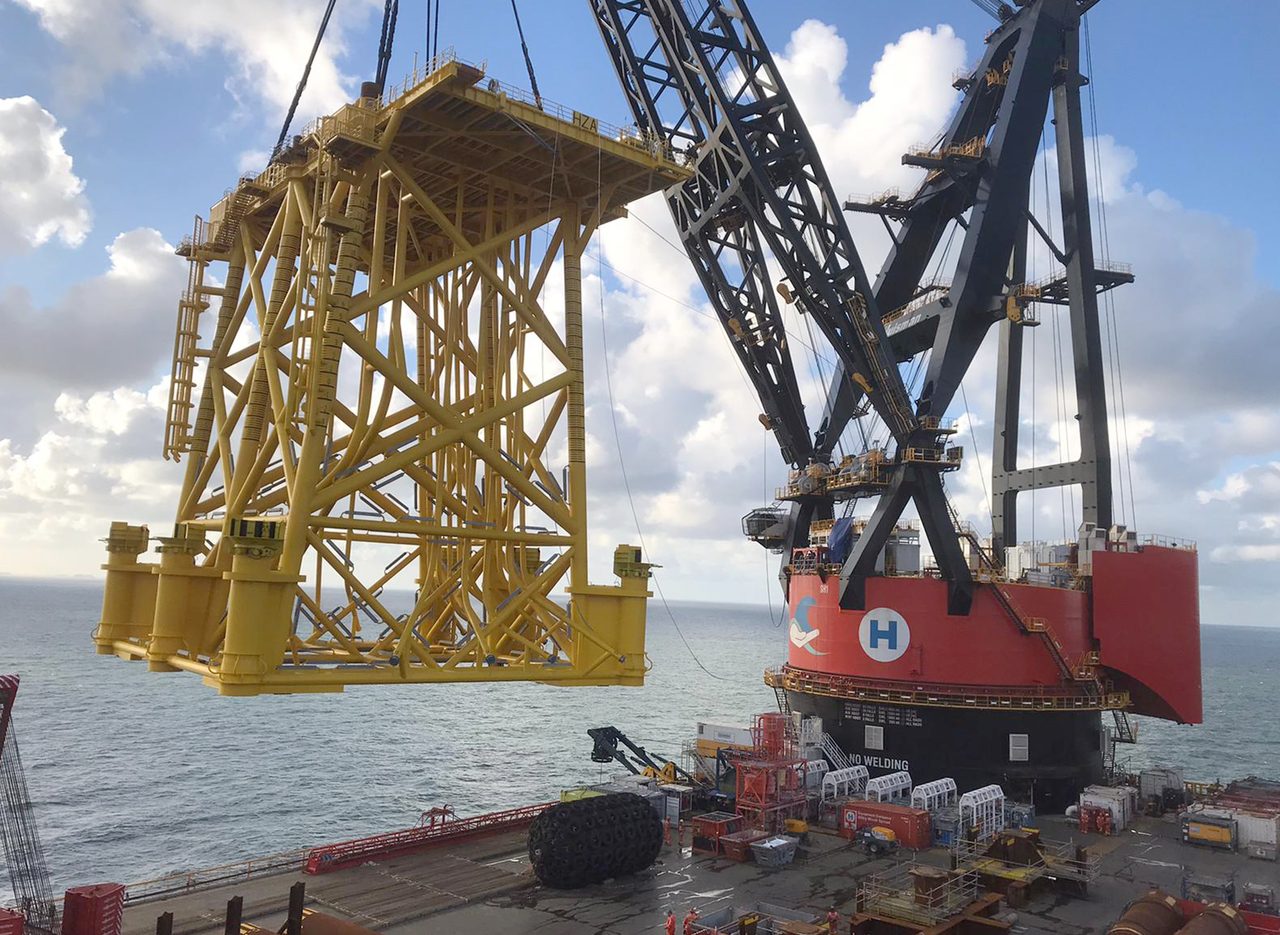
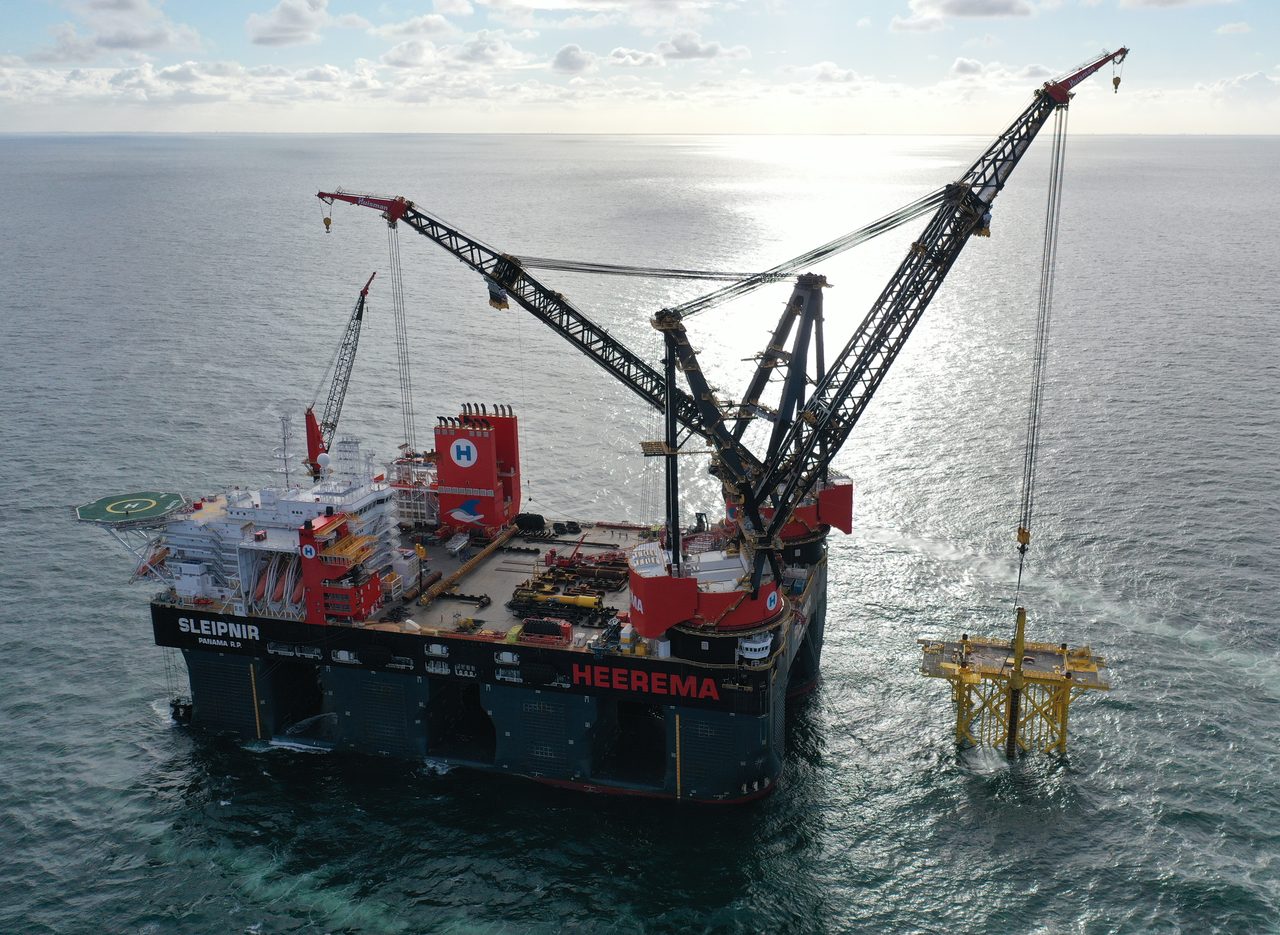
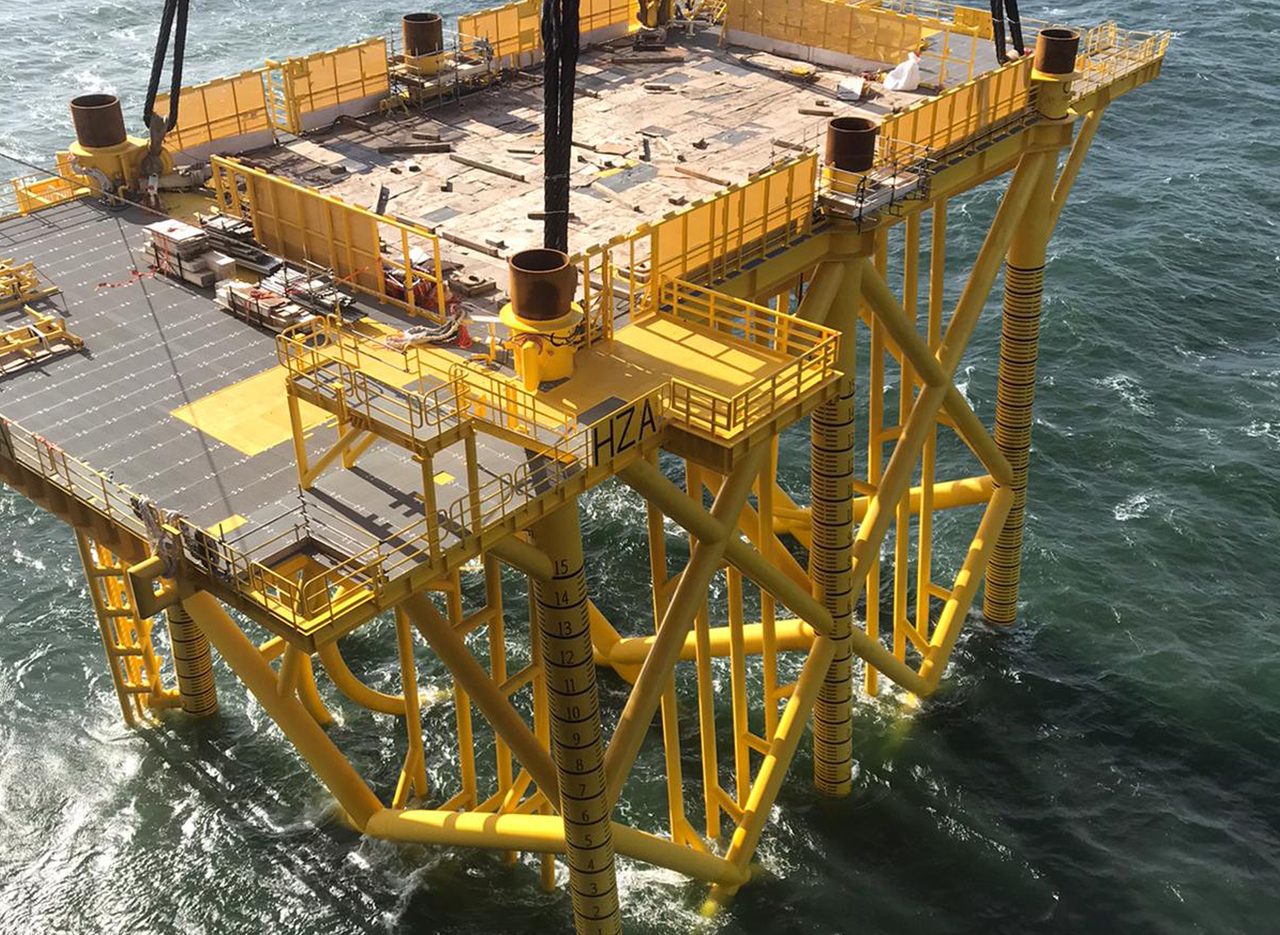
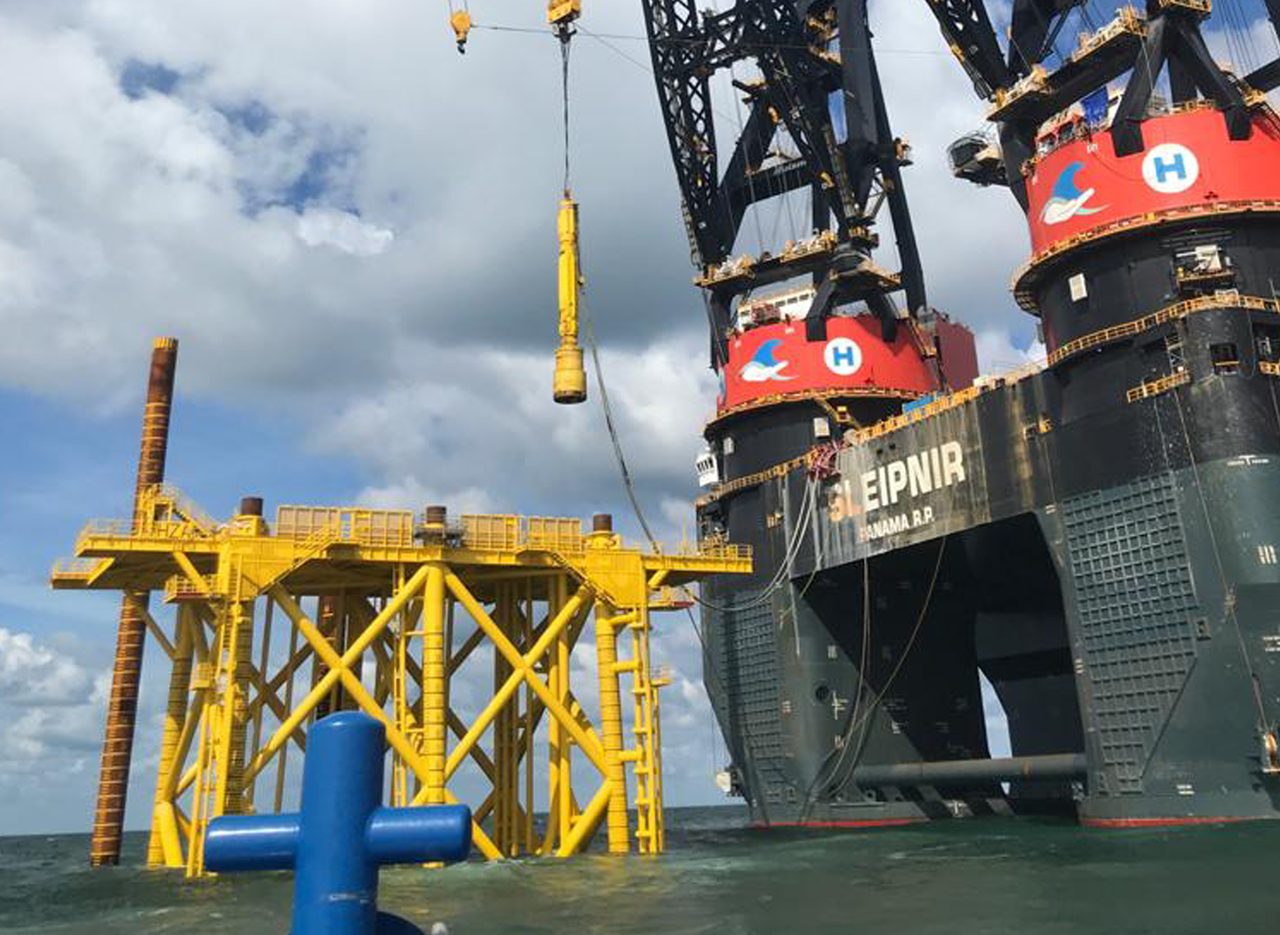
OFFSHORE INSTALLATION
“Each of the HKZ jackets took about a year to make, but many of those months coincided with the pandemic’s peak,” recalls Project Manager Abdulrahman Dandachi. “We were at the final assembly stage of the first jacket when Covid struck worldwide. Suddenly, we couldn’t get materials through the usual routes or modes of transport. We couldn’t fly in suppliers or experts for final commissions or testing. We struggled to mobilise equipment, like the giant cranes that handle heavy lifts.”
Lockdowns, restrictions, delays, quarantines and travel bans across the world threatened to throw the project off course, so the team had to be innovative, seeking out new routes and scouring the local market for products and expertise.
“We had virus cases most days. On one occasion we had to evacuate everybody and apply all the protocols. This meant mass testing of more than 700 people in two days, contact tracing for those testing positive and quarantining. We took all the precautions and followed all the rules, but we didn’t have to close the yard – not for a single day. We kept driving towards our deadline.”
“We would have faced huge costs if we didn’t load the jacket onto the barge in time but for every challenge, we had a Plan B. It was the ultimate test of our capabilities and will, but we managed to pull it off.”
COPING WITH ADVERSITY
